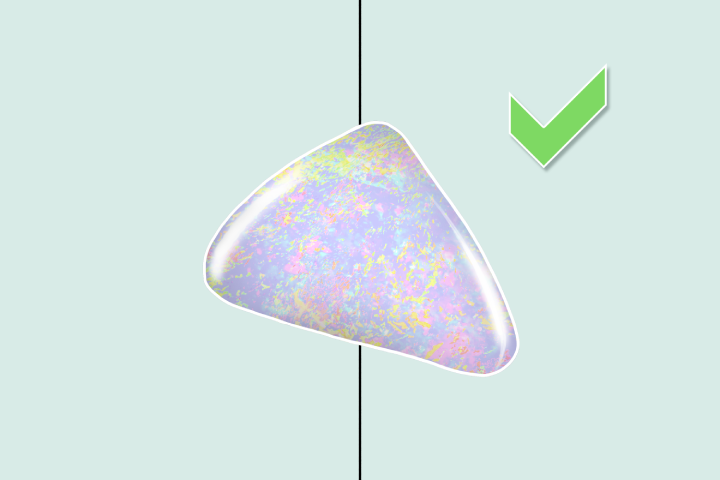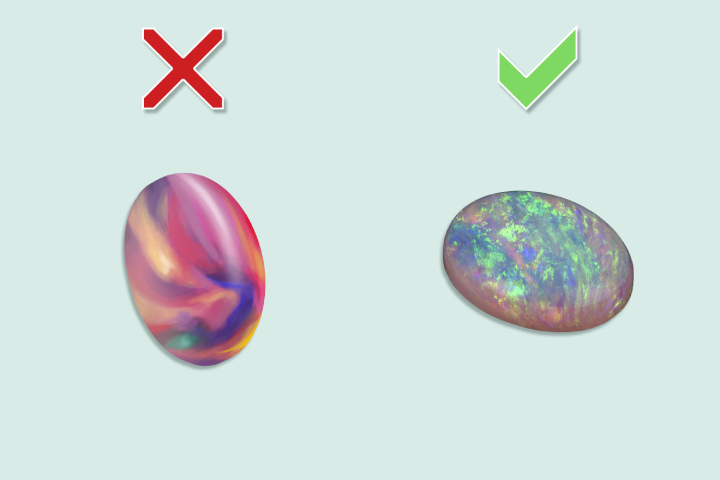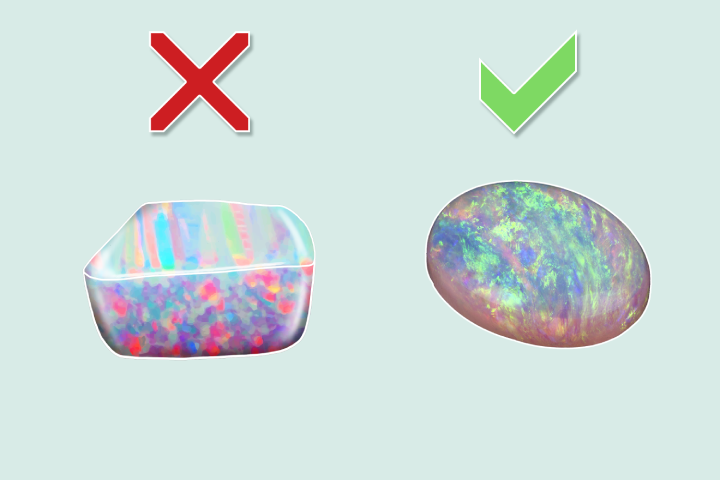Inspect the Symmetry
Natural opals may not be perfectly symmetrical, even after cutting and polishing. If the opal is a perfect shape, like a circle or oval, have it inspected by a professional jeweler.

Check the Color Play
Real opals will display a unique, luminous play-of-color caused by the diffraction of light as it passes through the gemstone.
Fake opals may appear more dull or have uniform color rather than the distinct play-of-color found in natural opals. Hold the opal up to a strong white light source and take a close look at the color play within the stone.

Look for Patterns
Opals created in a lab (Gilson opals) often have bright, large patches of color and a “snakeskin” pattern. Real opals, on the other hand, have a unique and varied pattern without a columnar structure when viewed from the side. Look out for uniform or ‘too perfect’ patterns, which may indicate a fake.

Tips for Authenticating an Opal
- It’s a good idea to use multiple methods to determine the authenticity of an opal, as no single test is foolproof.
- If you are unsure about the authenticity of an opal, seek the evaluation of a professional. They have the expertise and specialized equipment needed to accurately determine the gem’s authenticity.